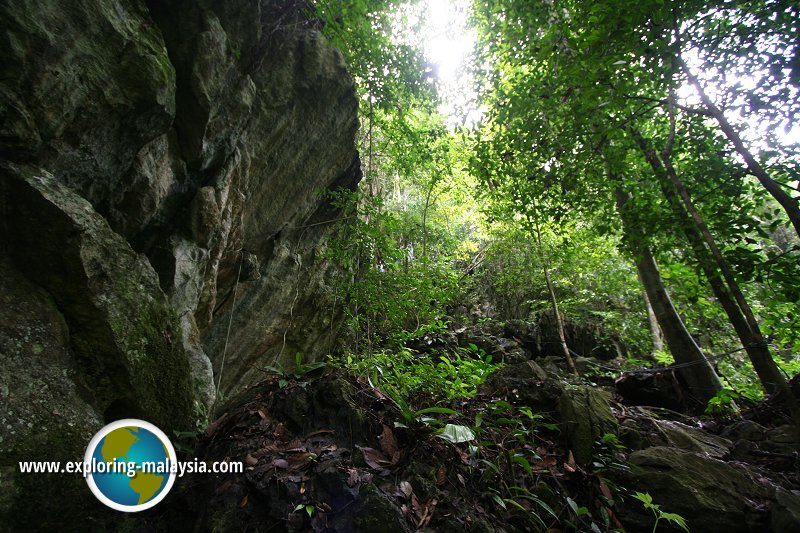 Exterior of Gua Gunung Runtuh (4 February, 2006)
Exterior of Gua Gunung Runtuh (4 February, 2006)
Gua Gunung Runtuh (GPS: 5.12659, 100.96978) is a cave within the limestone massif of Bukit Kepala Gajah, Perak. Within archaeological circles, it is famous for being the site where the oldest intact human skeleton from prehistoric times was discovered. This important discovery was instrumental in having the Lenggong Valley inscribed as a World Heritage Site by UNESCO on 30 June, 2012.
Initial excavations works at Gua Gunung Runtuh were carried out in 1990 by the Centre for Archaeological Research Malaysia of Universiti Sains Malaysia, with the cooperation of the Department of Museums and Antiquities. Gua Gunung Runtuh is a surprisingly small cave - the above photograph, taken in wide angle on 1 April 2006 - shows practically the entire cave.
Gunung Gua Runtuh is located 105 m above sea level. My wife and I, along with a few friends, joined a team of archeological students from the Universiti Sains Malaysia (USM) led by a friend of ours, the archeologist Dr Stephen Chia.
It took us about 45 minutes to walk from Kampung Ulu Jepai, a Malay kampung near Gelok (where prehistoric stone tools dating 100,000 years ago have been excavated), in Lenggong, to the cave. The journey takes us through the Malay kampung. We got a view of Bukit Kepala Gajah from afar. There are more than one cave at this hill, the other being Gua Harimau, some 3 kilometers from Gua Gunung Runtuh, which palentologists believe may have been a prehistoric burial ground.1
Then the scenery changes to one of undergrowth and eventually the dense jungle. The path was on quite a flat ground until the final section, when it crawls steeply up the hill side. It was hot and humid, and with the forest vegetation wrapped around the path, I was drenched in perspiration. The mouth is located on a steep side of the hill protected by sharp jutting boulders and slippery slope.
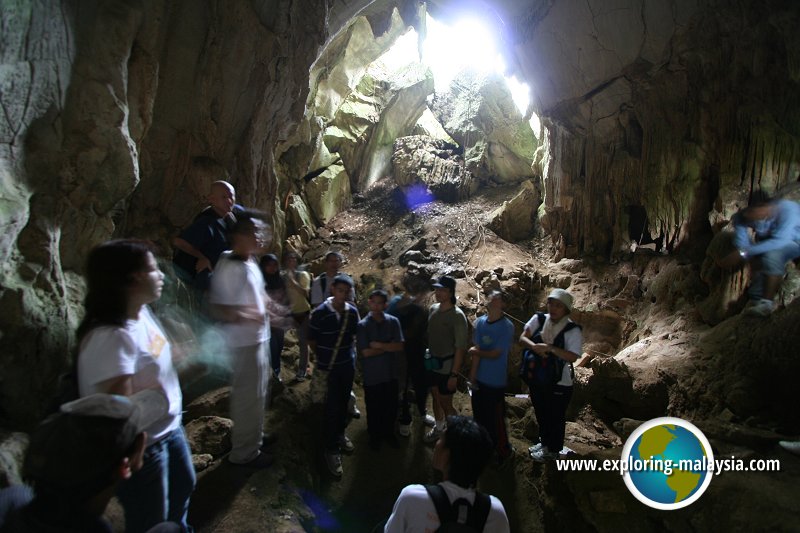 USM archaeologist Dr Stephen Chia giving a briefing at Gua Gunung Runtuh, Lenggong (4 February, 2006)
USM archaeologist Dr Stephen Chia giving a briefing at Gua Gunung Runtuh, Lenggong (4 February, 2006)
Path heading to Bukit Kepala Gajah.
Signboard near the entrance to Gua Gunung Runtuh.
Entrance to Gua Gunung Runtuh.
Inside Gua Gunung Runtuh
Gua Gunung Runtuh is  on the map of Lenggong
on the map of Lenggong
To properly document Gua Gunung Runtuh required me to bring my camera gear and heavy tripod - a most challenging endeavour. I slipped and almost fell and still had to balance a heavy bag of gear. The length I went to get the photos and information for you!
Gua Gunung Runtuh was the site where the Perak Man was discovered. Perak Man is presently the oldest and most complete skeleton to be found not only in Malaysia, but in the whole of Southeast Asia. Radiocarbon dating has placed it as around 10,000-11,000 years old.
 Interior of Gua Gunung Runtuh (4 February, 2006)
Interior of Gua Gunung Runtuh (4 February, 2006)
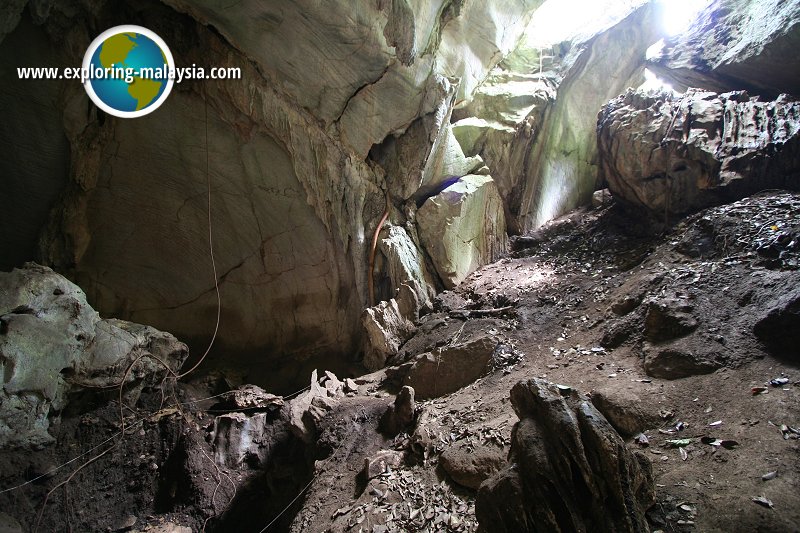 Interior of Gua Gunung Runtuh (4 February, 2006)
Interior of Gua Gunung Runtuh (4 February, 2006)
Perak Man was found buried with all the funerary artifacts, including pebble tools, food remains, and thousands of riverine shells scattered around his body. Perak Man was buried in a foetal position with both his legs were folded up and the knees bent while the hands were placed over the abdoment and shoulder.
The age of Perak Man is believed to be between 40-45 (or perhaps a little older), and is considered elderly for a prehistoric specimen which normally had lifespans of 20-30 years. He was 154 cm high, and walked with a bending position due to some generic malformation that made one of his legs longer than the other. (Indeed, Perak Man is the only prehistoric skeleton in the world found to have this deformity.) Otherwise he was healthy when alive.
For more information on the archaeological finds in Perak, please continue to the webpage on the Lenggong Archaeological Museum.
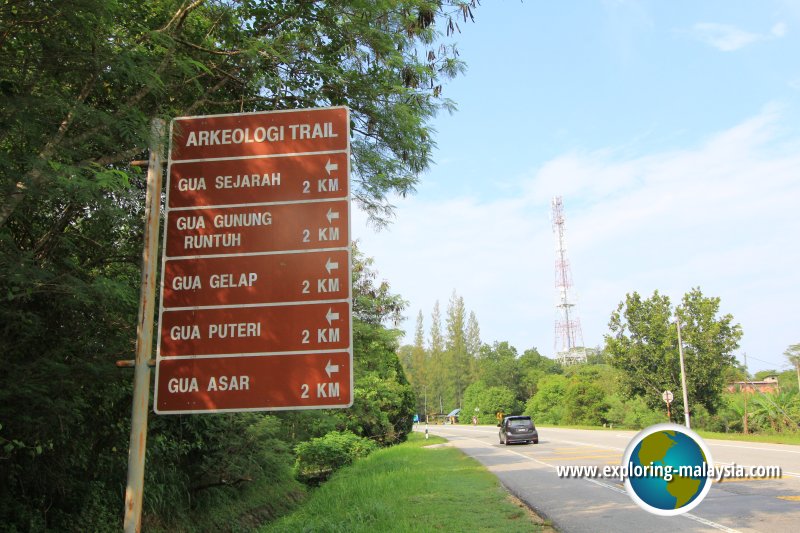 Signboard beside the Kuala Kangsar-Grik Highway (6 September, 2015)
Signboard beside the Kuala Kangsar-Grik Highway (6 September, 2015)
 The way to Gua Gunung Runtuh, viewed at coordinates 5.129697, 100.988237 (1 April, 2006)
The way to Gua Gunung Runtuh, viewed at coordinates 5.129697, 100.988237 (1 April, 2006)
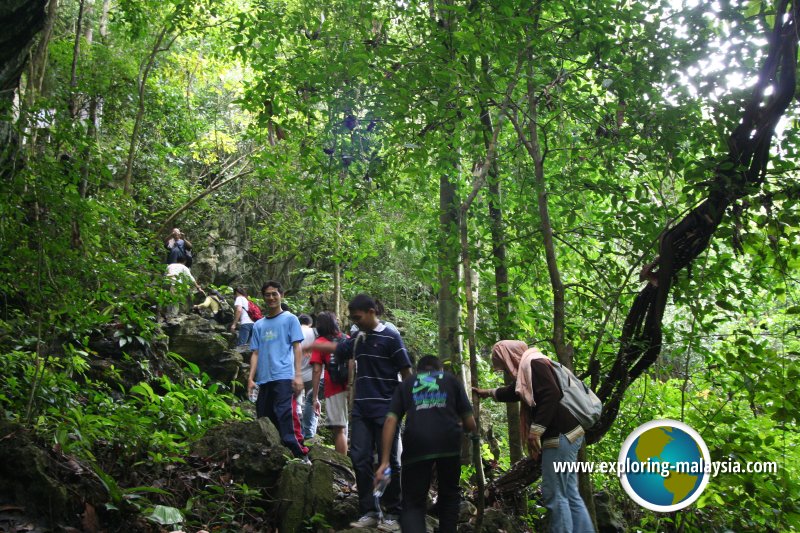 The contingent of USM archaeology students making their way up Bukit Kepala Gajah towards Gua Gunung Runtuh. (1 April, 2006)
The contingent of USM archaeology students making their way up Bukit Kepala Gajah towards Gua Gunung Runtuh. (1 April, 2006)
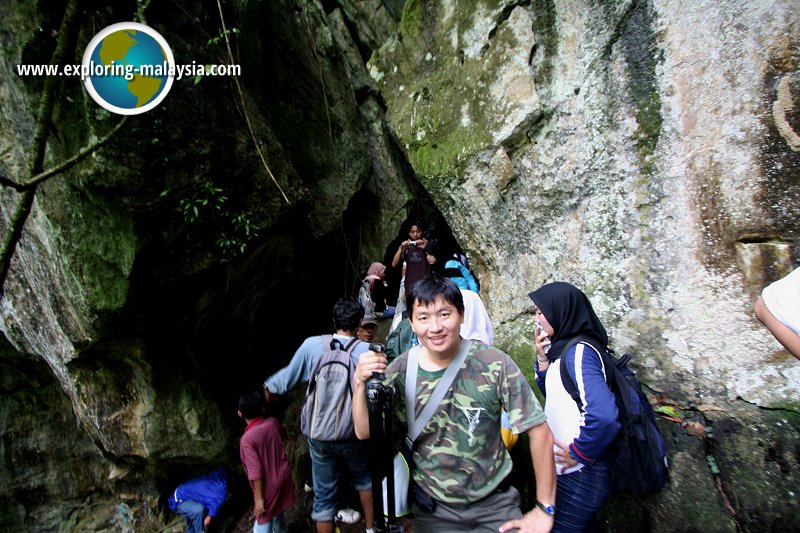 Here I am at the entrance to Gua Gunung Runtuh (4 February, 2006)
Here I am at the entrance to Gua Gunung Runtuh (4 February, 2006)
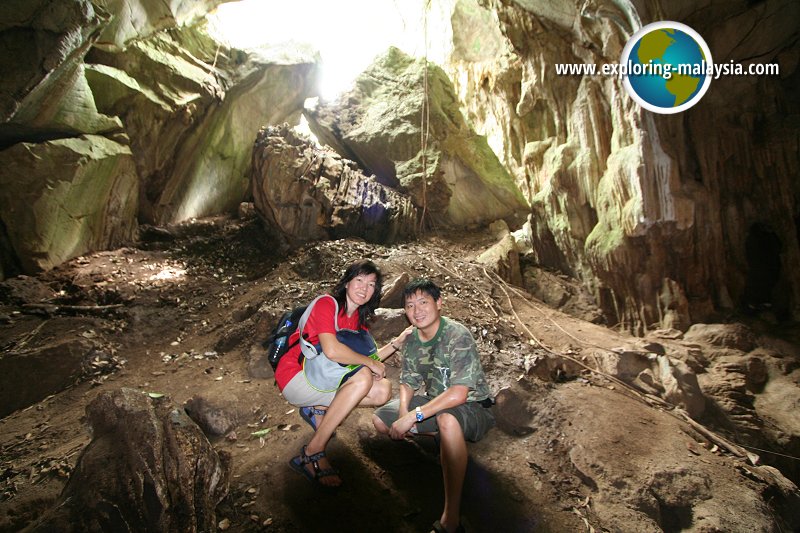 Tim & Chooi Yoke at Gua Gunung Runtuh (4 February, 2006)
Tim & Chooi Yoke at Gua Gunung Runtuh (4 February, 2006)
References
 Latest updates on Penang Travel Tips
Latest updates on Penang Travel Tips

Copyright © 2003-2025 Timothy Tye. All Rights Reserved.

 Go Back
Go Back